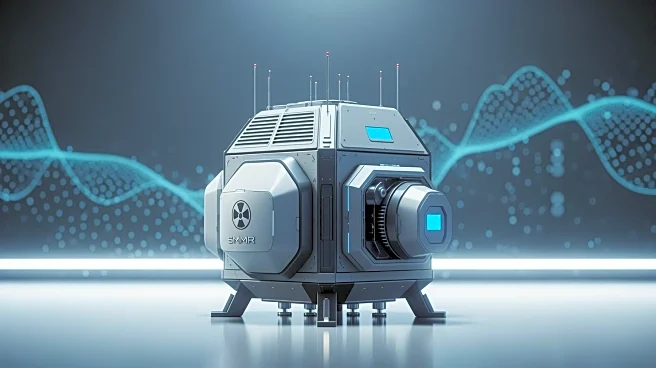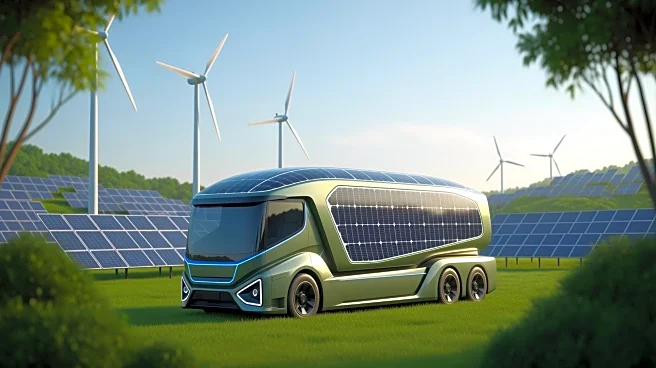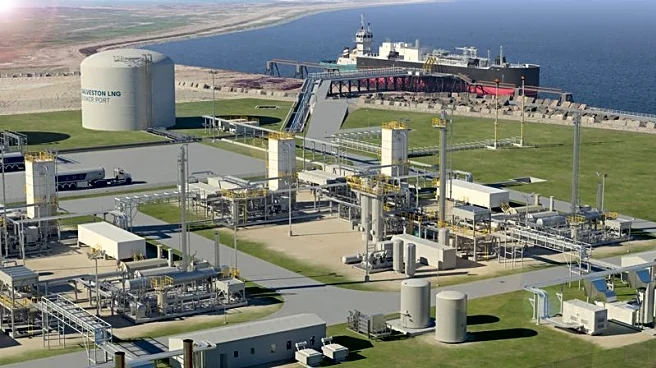What's Happening?
AES Indiana has announced a feasibility study to explore the construction of small modular reactors at its Eagle Valley and Petersburg power plants. This announcement was made during the Global Nuclear
Energy Economic Summit at Purdue University, where nuclear energy leaders gathered to discuss the future of the industry. The study will assess various factors including licensing, construction, operations, and siting considerations such as population distribution, water availability for cooling, transmission infrastructure, and emergency planning. The study aims to guide the selection of the most suitable site and is expected to be completed by mid-2026. Additionally, First American Nuclear announced plans to establish its headquarters and a specialized energy park in Indiana, which will operate in a closed-fuel cycle, reprocessing and reusing spent nuclear fuel.
Why It's Important?
The development of small modular reactors represents a significant shift in the nuclear energy landscape, offering potential solutions to meet growing energy demands while addressing environmental concerns. Indiana's proactive approach, supported by strong state leadership and educational institutions like Purdue University, positions it as a potential leader in nuclear innovation. The feasibility study by AES Indiana could pave the way for more sustainable and efficient energy production, reducing reliance on traditional fossil fuels. However, challenges such as supply chain issues and the shortage of high-assay low-enriched uranium, exacerbated by the impending ban on Russian imports, pose significant hurdles. The federal government's investment in domestic production and the collaboration with tech companies like Google to optimize supply chain logistics are crucial steps in overcoming these obstacles.
What's Next?
The completion of AES Indiana's feasibility study by mid-2026 will be a critical milestone in determining the viability of small modular reactors in the state. If successful, it could lead to the construction of these reactors, contributing to Indiana's energy portfolio and potentially setting a precedent for other states. The federal government's $2.7 billion investment in domestic uranium production is expected to mitigate supply chain challenges, ensuring a steady supply of nuclear fuel. Additionally, the establishment of First American Nuclear's energy park and Purdue University's new Institute for Energy Innovation will further bolster Indiana's position in the nuclear sector, fostering research and development and creating educational opportunities in nuclear technology.
Beyond the Headlines
The resurgence of interest in nuclear energy, particularly small modular reactors, reflects broader shifts in energy policy and environmental strategy. These reactors offer a more flexible and scalable solution compared to traditional nuclear plants, potentially reducing construction costs and timelines. The focus on closed-fuel cycles and reprocessing spent fuel aligns with sustainability goals, minimizing nuclear waste and enhancing resource efficiency. However, the industry must address the legacy of past nuclear incidents, such as the Three Mile Island and Chernobyl disasters, which have impacted public perception and expertise in the field. Bridging the generational gap in nuclear expertise and revitalizing heavy manufacturing domestically are essential for the industry's long-term success.












